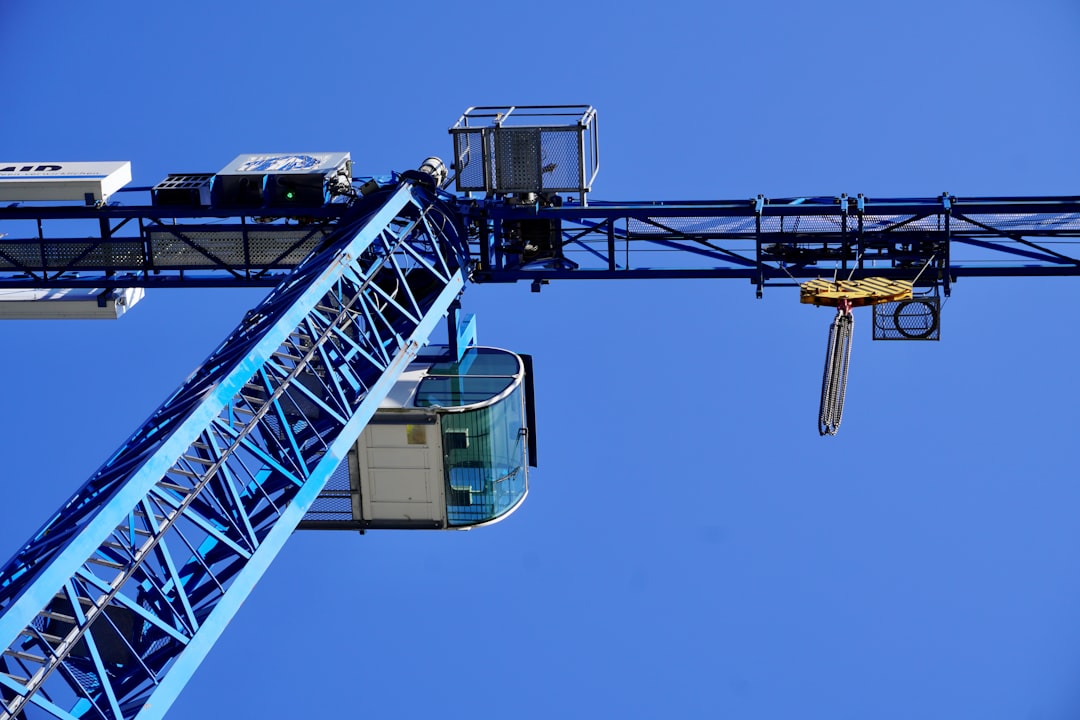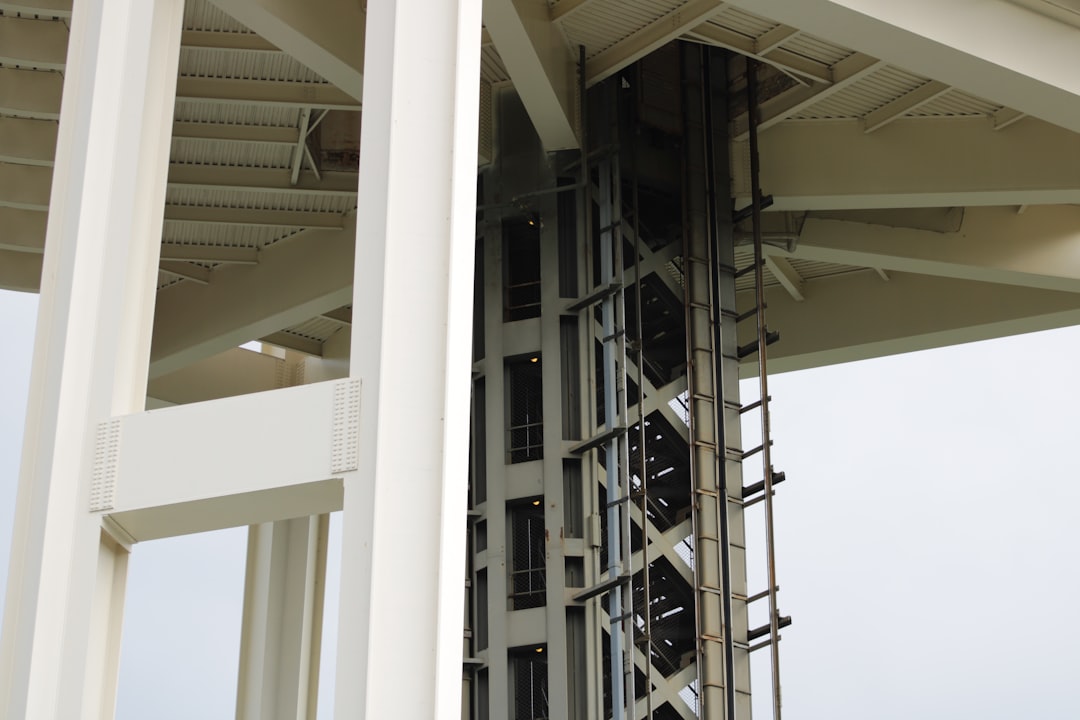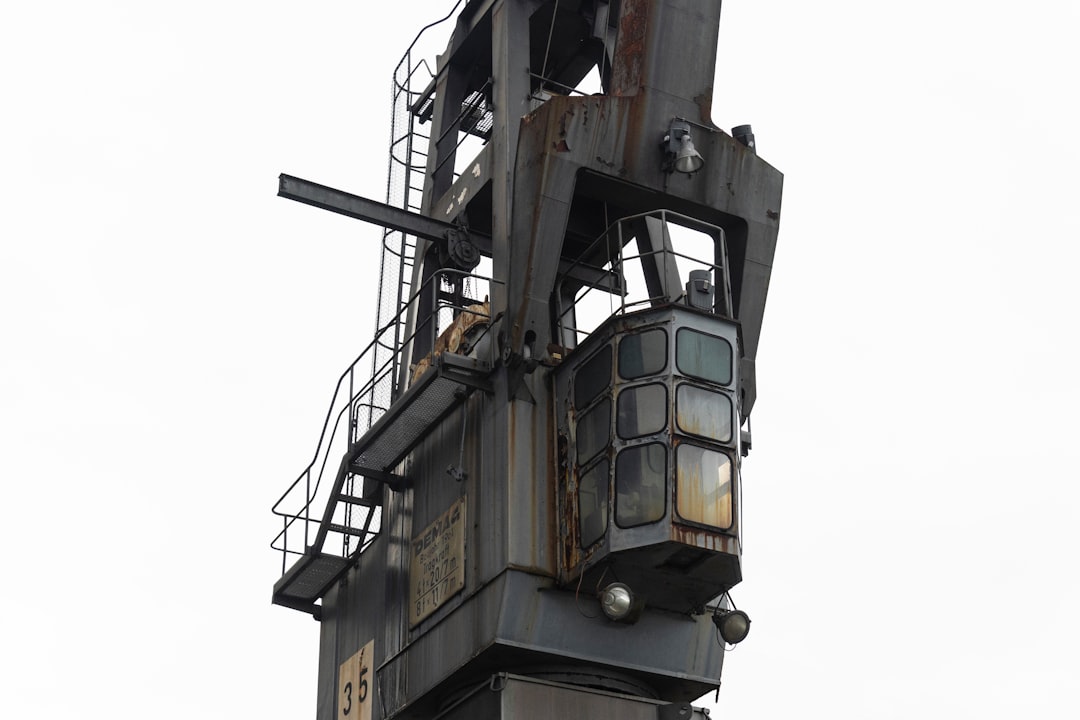

Engage prospects with a scan and streamline customer engagement with FREE QR code marketing tools by Sona – no strings attached!
Create a Free QR CodeFree consultation

No commitment

Engage prospects with a scan and streamline customer engagement with FREE QR code marketing tools by Sona – no strings attached!
Create a Free QR CodeFree consultation

No commitment
QR codes have rapidly evolved from a novelty into a strategic tool that bridges offline engagement with online action. For hydraulic lift repair services, QR codes provide a modern, efficient way to reduce service delays, enhance customer experiences, and boost lead generation without requiring app downloads or specialized hardware. A simple scan connects equipment, operators, and technicians to the exact resource or action required at that moment: service requests, maintenance logs, parts ordering, or safety documentation via QR codes on lifts.
The biggest advantage is speed. Prospects and customers can take action immediately from a sticker on a lift, a technician’s badge, an invoice, or a service van. Every scan becomes a measurable signal that can be tracked and routed to the right workflow, which means fewer voicemails lost in the shuffle and fewer missed opportunities to book jobs or prevent breakdowns.
Hydraulic lift repair teams can use a mix of static and dynamic QR codes across their environment to capture high-intent leads, streamline communications, and build a connected service experience. By deploying codes on physical assets and documents that already circulate in the field, companies turn anonymous touchpoints into data-rich interactions that inform follow-up, accelerate repair cycles, and drive revenue.

Hydraulic lift repair businesses often face delayed response times due to paper-based processes, missed voicemails, and unclear maintenance notes. These bottlenecks create friction at critical moments: a lift goes down, an operator calls the office, the message bounces between inboxes, and the job is delayed. Meanwhile, competitors who respond faster secure the work and potentially the long-term maintenance contract.
QR codes close these gaps by turning every physical surface into a direct line to action. When operators scan a code on a lift, they can submit a service request with photos, serial numbers, and location data in seconds. When technicians scan a job card, they can access the latest procedures and parts lists, update maintenance logs in real time, and trigger automated notifications to supervisors or clients. Each scan is captured, timestamped, and associated with an asset or location, which translates into faster response, less downtime, and higher customer satisfaction.
Replacing manual workflows with QR codes gives visibility into previously anonymous interactions that used to vanish in the field. A platform like Sona QR can automate the path from scan to ticket creation, assign the right technician, and enrich your CRM with intent data so sales and service teams follow up with precision.

Many hydraulic lift service providers struggle to understand who is engaging with their offerings and why. Prospects may read a brochure, view a service van, or study an equipment safety card, yet never submit a form or make a call. Paper materials are hard to measure, and without a clear bridge from offline to online, interest often fades before it becomes a booked job.
QR codes solve this problem by making every offline moment scannable and trackable. You can embed a code on a lift’s inspection tag that opens a prefilled service request via Google Forms QR codes, add a code to the back of a technician’s ID that launches a scheduling page, or put a code on a maintenance card that loads the latest troubleshooting video. With dynamic QR codes, these digital destinations can be updated in minutes without reprinting anything.
For a field-driven business, this visibility is transformative. QR codes convert hard-to-measure physical touchpoints into real-time, measurable engagement that supports faster response, higher first-time fix rates, and more predictable maintenance revenue.

Hydraulic lift repair teams benefit most from formats that shorten the path from problem to solution. Whether you are connecting customers to booking forms or technicians to authoritative documentation, the right QR code format reduces friction and captures data in context.
When paired with dynamic destinations, these formats let you update links as processes evolve. For example, if you change your service intake form or add a new preventive maintenance checklist, you can update the target without swapping out the code on the equipment.
Use dynamic QR codes when you need analytics, frequent updates, or testing flexibility. Static codes are acceptable for unchanging resources like evergreen safety posters. In most cases, dynamic codes are the smarter default for service operations because they support ongoing optimization and detailed attribution.

Hydraulic lift repair providers often hand out brochures, leave behind maintenance cards, and complete onsite visits without a clear way to track follow-up. Once the technician leaves, interest can fade, and the opportunity to book a contract or upsell a service package diminishes.
Strategic QR placement converts these moments into measurable growth. Each scan tells you who is engaging, what they need, and where they are. You can tag codes by facility, asset, and campaign, then feed these insights into routing, remarketing, and account outreach. See ideas to grow your auto repair business.
Each placement turns passive impressions into active engagement. Over time, you can rank locations by scan-to-ticket conversion and continue investing where QR codes drive the most value.

The most effective QR applications reduce downtime and make every interaction traceable. By building QR-enabled paths into equipment, documents, and field gear, you standardize processes and capture data that improves service quality and sales outcomes.
The following use cases map directly to common moments in the customer and technician journey. They eliminate the friction of phone trees and email back-and-forth and give teams real-time visibility across assets and accounts. For broader strategy, see QR codes in marketing.
Embedding these use cases at critical touchpoints also creates early intent signals for sales. A cluster of scans from one site can indicate aging equipment or emerging issues, which allows account managers to reach out with proactive solutions.
Every scan carries context: which asset was involved, where the scan occurred, what time it happened, and what action was taken. When you deploy unique QR codes across your environment, you create a rich data layer that segments audiences by behavior instead of guesswork.
This segmentation powers targeted follow-up. You can create audience groups based on job role, urgency, and stage in the buyer journey, then route them to tailored communication. For example, a procurement officer who scanned a maintenance plan offer might receive pricing details, while an operator who scanned an emergency code might receive a post-repair checklist and training link.
With Sona QR, each code is a smart entry point that assigns tags automatically. Scans can create CRM activities, notify account owners, and add contacts to nurture tracks without manual data entry.
QR codes unify your offline assets with your digital funnel. See Sona’s blog post titled guide to offline attribution. They make print and field materials measurable, accelerate response, and provide a clear line of sight from impression to revenue. For hydraulic lift repair services, this integration is especially valuable because so many interactions happen away from a computer screen.
Think of QR codes as the onramp to your marketing and operations engine. Scans feed data into your CRM and analytics tools, which power timely follow-up and continuous optimization. Below are channel examples tailored to hydraulic lift repair:
QR codes serve as connectors across channels and teams. With a centralized platform like Sona QR, you can manage all your codes, monitor performance in one dashboard, and sync scan data with your CRM and ad platforms for unified reporting.
Many QR initiatives underperform because they lack clear goals, trackability, or follow-up processes. To avoid wasted scans, treat your QR rollout like a structured campaign with defined objectives, testable placements, and analytics that tie scans to outcomes.
The checklist below walks you through the essentials for a hydraulic lift repair deployment. It covers planning, selection, design, deployment, and optimization so you can roll out with confidence and scale what works.
Start with use cases that solve urgent problems and map directly to revenue or productivity. Typical goals include reducing downtime by streamlining emergency requests, increasing service tickets by simplifying intake, or boosting maintenance plan renewals by adding QR links to invoices and service reports.
Select static codes for fixed, unchanging content like evergreen safety posters. Choose dynamic codes for trackable, editable destinations such as service request forms, booking pages, and rotating offers.
A QR code is only effective if people can see it, understand it, and scan it easily. Design with contrast, size, and real-world context in mind, then test in the environments where your codes will live.
Roll out codes in the physical and digital locations where your audience already engages. Prioritize assets that combine high visibility with high intent to drive rapid adoption and measurable results.
Launch with analytics in place so you can attribute scans to outcomes and iterate quickly. Look beyond raw scan counts to evaluate conversion rates and revenue impact.
Field service teams often lack visibility into which assets and customers drive outcomes. Without unified analytics, it is difficult to justify spend or allocate resources effectively. Knowing that a code was scanned is a start, but tying that action to a service request, a scheduled job, and a renewal is where value is proven.
A closed-loop analytics approach shows what works across placements, audiences, and messages. It connects scans to tickets and tickets to revenue, which helps leadership invest confidently and helps operations refine processes. With the right tooling, you can analyze performance by asset, site, and job type and respond in real time as patterns emerge.
Sona QR captures real-world engagement at the scan level and sends that data wherever you need it. Sona.com then helps unify touchpoints across the buying and service journey, from the first scan to the renewal conversation, so you can make QR a core part of your performance strategy.
Even strong QR deployments can underperform if codes are generic, untracked, or unsupported by follow-up. To get the most from your investment, align QR strategy with your physical environment, buyer journey, and systems of record.
Choose a handful of best practices you can execute consistently. Focus on granular tracking, timely automation, and messaging that clearly tells users what they get for scanning. Small improvements in clarity and process can yield outsized gains in scan-to-action rates.
Creative deployments can boost adoption. For instance, place a QR on a fluid-reservoir label that opens a video on how to check levels safely, or add a code on a magnetic whiteboard in the maintenance room that launches the daily inspection checklist and logs completions automatically.
The hydraulic lift repair landscape is getting faster, more data-driven, and more competitive. QR codes give providers a practical way to connect physical assets and field interactions to digital workflows that drive measurable results. With a scan, you can capture a high-intent request, route it to the right team, and record the entire journey from issue to resolution inside your CRM.
Here is the core value: QR codes turn every physical surface into a digital entry point and every moment of interest into a moment of action. They create a connected experience that moves people from awareness to service request to maintenance plan renewal, while generating actionable data at each step.
With Sona QR, you can generate and manage dynamic codes, track performance across placements, and sync scan data to your CRM and ad platforms. Sona.com extends that value with identity resolution and multi-touch attribution so you can see how QR engagement contributes to pipeline and revenue. Start with a few high-impact placements like on-lift service requests and invoice renewals, learn from the data, and scale what works. The result is faster response, less downtime, stronger customer loyalty, and a growth engine that runs wherever your equipment and teams operate. Start creating QR codes for free.
QR codes have revolutionized hydraulic lift repair services by transforming how technicians access critical information and how businesses engage with their customers. Beyond streamlining service documentation and maintenance tracking, QR codes enhance customer acquisition and elevate client experiences by providing instant access to repair histories, safety protocols, and service scheduling—all at the scan of a code. Imagine technicians resolving issues faster with real-time data, while customers enjoy seamless communication and transparency throughout the repair process.
With Sona QR, you can effortlessly create dynamic, trackable QR codes tailored for hydraulic lift repair workflows. Update service instructions instantly without costly reprints, monitor scan activity to optimize technician efficiency, and link every interaction back to revenue-generating outcomes. No detail is lost, and every scan becomes a valuable touchpoint driving operational excellence and customer loyalty.
Start for free with Sona QR today and turn every QR code scan into a smarter, faster, and more profitable hydraulic lift repair service.
Common issues include equipment breakdowns, maintenance needs, troubleshooting errors, and safety concerns that cause downtime and require service requests.
The article does not specify exact costs for hydraulic lift repairs.
Professional hydraulic lift repair services can be located through service providers who use QR code technology to streamline requests and maintenance, but specific locations are not provided in the article.
Best practices include using QR codes for scan-to-maintenance logs, timely service requests, accessing up-to-date troubleshooting guides, and following scheduled preventive maintenance documented digitally.
Scanning QR codes on the lift can initiate service requests or access troubleshooting guides that help determine if professional repair is needed or if routine maintenance suffices.
QR codes enhance repair services by enabling fast service requests, real-time maintenance logging, access to updated guides, measurable customer engagement, and automated workflow routing.
Common QR code formats include web links for service forms, vCards for contact info, SMS or email triggers for urgent requests, PDF downloads for manuals, and maintenance logs.
Effective placements include on-lift stickers near control panels, technician badges, service vans, invoices, facility signage, and training areas.
Key steps are choosing use cases aligned with goals, selecting static or dynamic QR codes, designing and testing codes for visibility, deploying on high-impact assets, and tracking performance for optimization.
QR codes capture scan data like time, location, and user device, link scans to service tickets and job completions, and integrate with CRM systems for analytics and automated follow-up.
Yes, QR codes convert offline interactions into measurable digital actions, help segment audiences by behavior, enable targeted follow-up, and support contract renewals and upsells.
Technicians can access digital maintenance logs, troubleshooting guides, safety documentation, parts lists, and training videos through QR codes.
Dynamic QR codes allow updating linked content without reprinting, provide analytics, and support A/B testing, whereas static codes link to fixed, unchanging resources.
Effectiveness is measured by tracking scan volume, scan-to-ticket conversion rates, time-to-first-response improvements, and revenue linked to service requests initiated by QR scans.
Tips include using unique codes per asset, adding UTM tracking parameters, automating follow-ups after scans, educating users on scanning benefits, and placing codes in visible, relevant locations.
Use Sona QR's trackable codes to improve customer acquisition and engagement today.
Create Your FREE Trackable QR Code in SecondsJoin results-focused teams combining Sona Platform automation with advanced Google Ads strategies to scale lead generation

Connect your existing CRM

Free Account Enrichment

No setup fees
No commitment required

Free consultation

Get a custom Google Ads roadmap for your business






Launch campaigns that generate qualified leads in 30 days or less.
